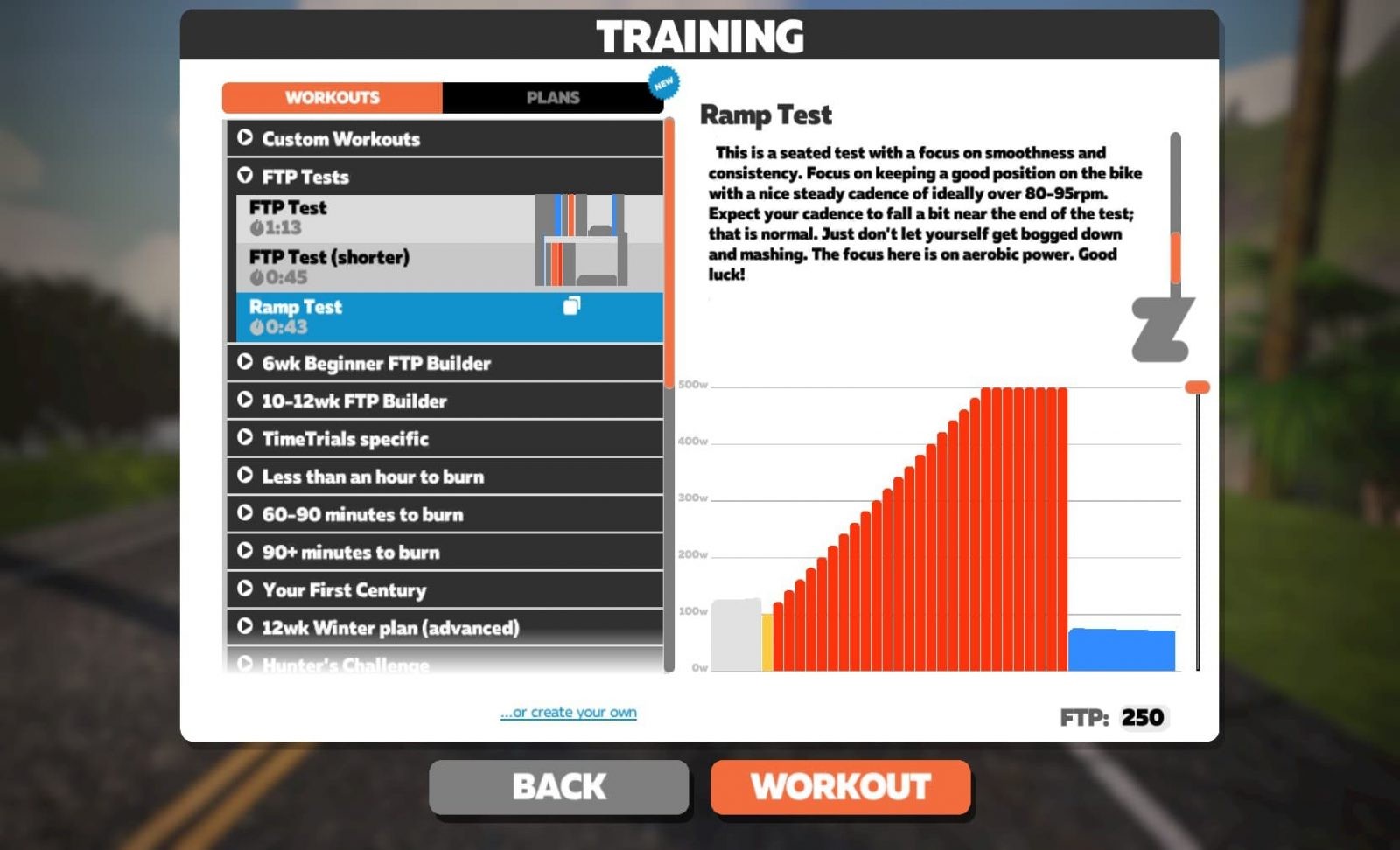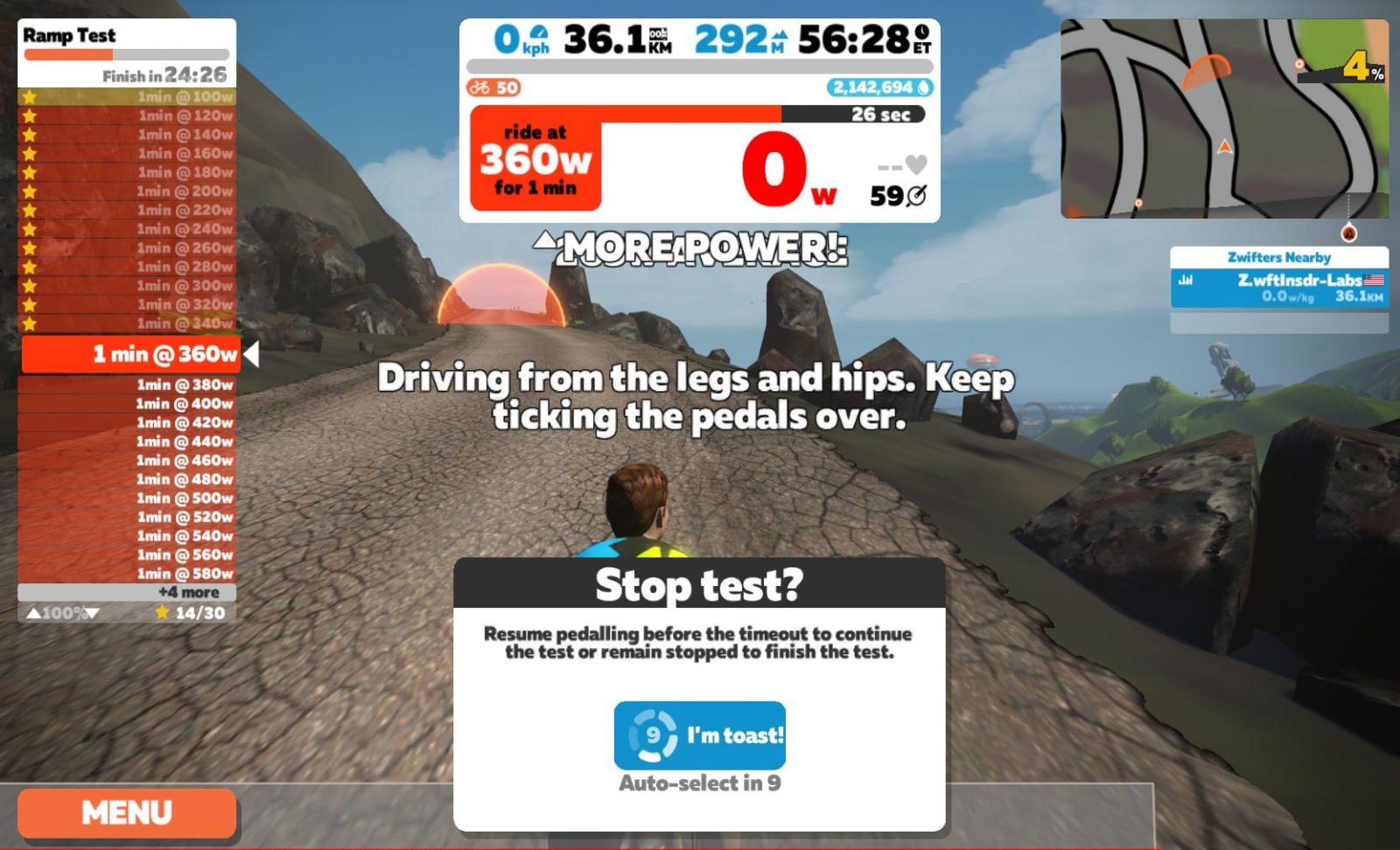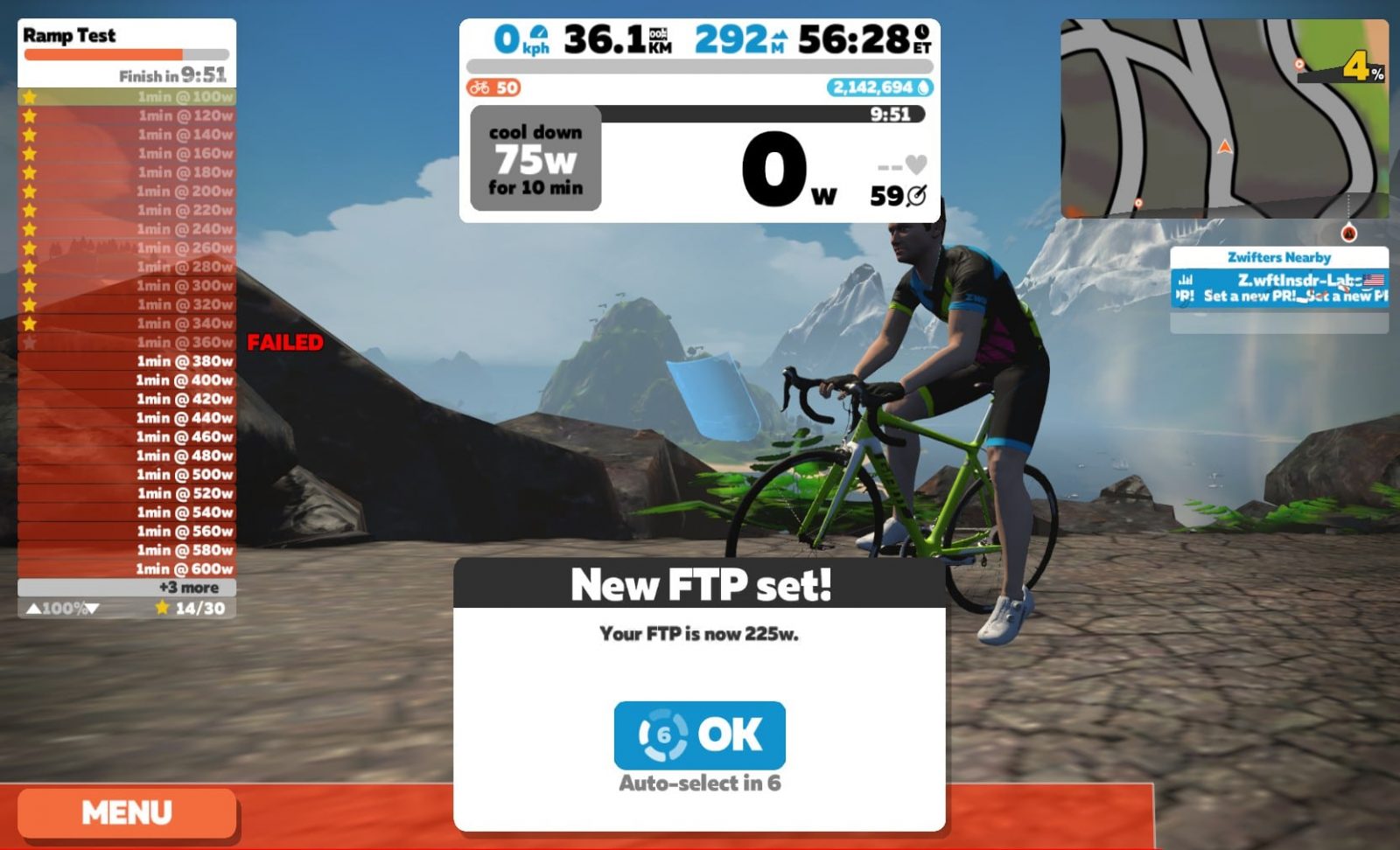If you know anything about training with power, you understand that your FTP is the key metric most commonly used for determining various training intervals. There’s just one problem with FTP: you have to test for it! And FTP tests are not fun.
Zwift has just released an in-game ramp test which determines your FTP in less time and suffering than the standard Zwift FTP test. While the standard FTP Test requires a challenging warmup followed by a 20-minute max effort, the Ramp Test begins with an easy warmup then ramps up incrementally each minute until you can’t go anymore. You can plan on 4-8 minutes of real effort with the Ramp Test, instead of 20. And the entire test will only take 10-20 minutes, while the standard FTP test takes 45 minutes!
Here’s how it works…
Choose the Ramp Test from the “FTP Tests” category in your workouts list, then click “Workout” to begin.
The test will let you warm up for 5 minutes at whatever level you’d like. It then starts you on an ascending series of 1-minute intervals beginning at 100 watts and increasing by 20 watts each minute.
Your goal here is to stay seated the entire time, and go until you can no longer turn the pedals. The text on-screen will give you these instructions and lots of other useful advice.
Once you stop pedaling, the screen will change:
And if you click “I’m toast” or let the timer run out, Zwift will calculate your FTP based on how far you got into your final interval.
That’s it! Just hop on, warm up, then ramp up your effort until you can’t go anymore. It’s quick and a lot less suffery than traditional FTP tests.
Notes from HQ
I asked Jordan Rapp at Zwift HQ about the new test, and he shared that some of the biggest (and nerdiest) news here is the enhancement to the ZWO file structure to support the Ramp Test functionality. No need getting into details now, but Zwift has implemented lots of enhancements to ZWO’s XML specification to make this test possible. No doubt those changes will prove useful for other workouts down the road.
Jordan also said one thing he really likes about the ramp test is that this is a great workout just to do. Looking for a short, max effort? Want to test your limits? Hop on and crush a ramp test!
Further Reading
Looking to dive deeper into training with power? You’ll be happy you did!
Knowing your FTP is just the start on your journey to most effective training. Here are the two best books on the subject (buy them by clicking below and help support this site!):
Your Thoughts?
Give it a try and comment below on your experience!



